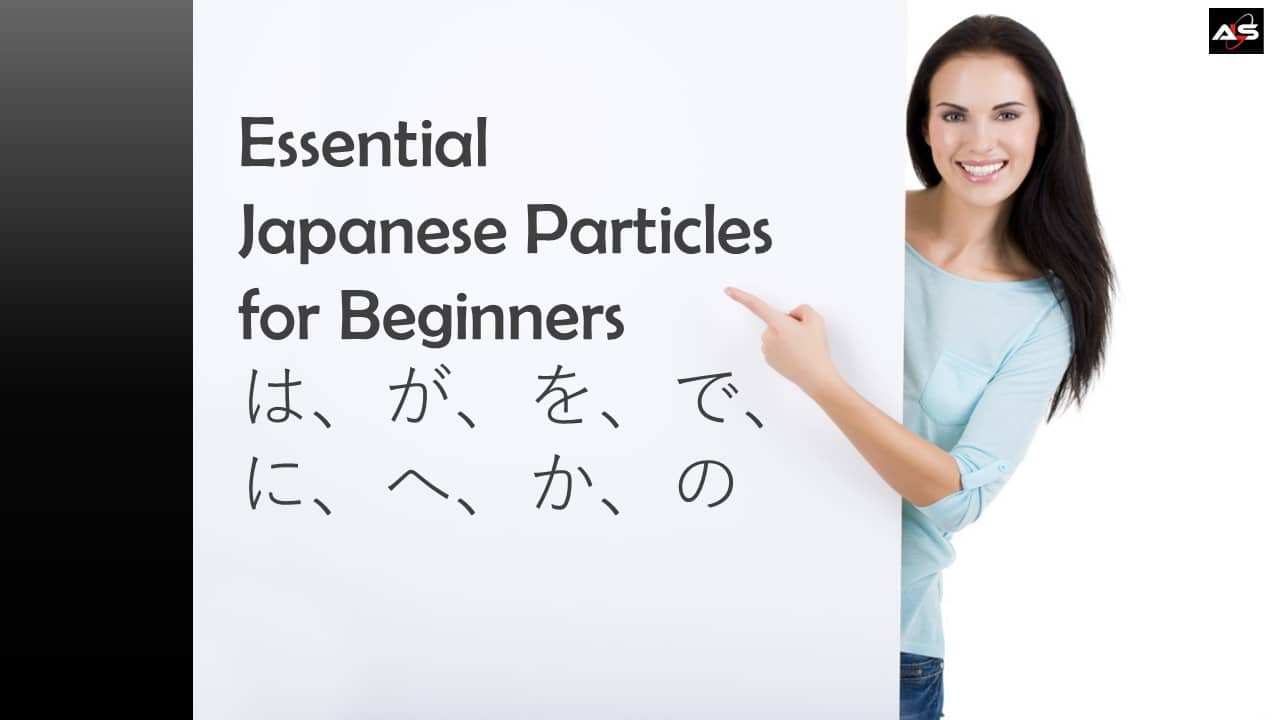8 Essential Japanese Particles
for Beginners
Topic Particle は
はis used to mark a topic. In the sentence below, Mr Smith is the topic of the sentence. Mr Smith is also the subject of the sentence. However, a topic is not necessarily the subject, as shown in the second sentence. The topic in the second sentence is “today”, which is a non-subject.
スミスさんは いしゃです。
Sumisu-san wa isha desu.
Mr Smith is a doctor.
きょうは あついです。
Kyou wa atsui desu.
It is hot today.
Subject Particle が
がis used to mark a subject which is a new piece of information in a sentence. The particle がis also used following a question word, and the answer to the question is also followed by the particle が instead of the particle は.
Q: だれが すきですか。
Dare ga suki desu ka?
Who do you like?
A: メアリーさんが すきです。
Mearii-san ga suki desu.
I like Mary.
Object Particle を
The particle を is used to mark a direct object.
おちゃをのみます。
Ocha o nomimasu.
I drink green tea.
Locative Particle で
The particle で follows the place where an event takes place.
きっさてんで コーヒーを のみます。
Kissaten de koohii o nomimasu.
I drink coffee at a café.
Goal of Movement Particle に
The particle has many functions. One of the functions is to indicate the goal of movement.
うちに かえります。
Uchi ni kaerimasu.
I return home.
らいねん にほんに いきます。
Rainen nihon ni ikimasu.
I will go to Japan next year.
Another particle that indicates goal-movement is the particle へ. The particle に and the particle へ can be used interchangeably, with a subtle difference. The particle に places emphasis on the destination, whereas the particle へdoes not. Nowadays, more people use the particle に than the particle へ regardless.
For example, for the two sentences above, you can use the particle へ instead.
うちへ かえります。
Uchi e kaerimasu.
I return home.
らいねん にほんへ いきます。
Rainen nihon e ikimasu.
I will go to Japan next year.
Time Particle に
Another function of the particle に is to indicate the time at which an event takes place.
6じに おきます。
Roku-ji ni okimasu.
I get up at 6 o’clock.
にちようびに テニスをします。
Nichiyoubi ni tenisu o shimasu.
I play tennis on Sunday.
Question Particle か
The particle か is placed at the end of a sentence to indicate a question, and no question mark is used.
なんですか。
Nan desu ka?
What is it?
ほんとうですか。
Hontou desu ka.
Really?
Possessive Particle の
The particle の indicates the relationship between two nouns. In the first example, the particle functions as a possessive particle or an apostrophe ‘s in English. In the second and third examples, the particle の connects two nouns and functions as a general modifier.
なおみさんのぼうし。
Naomi-san no boushi
Naomi’s hat
にほんごのがくせい
nihongo no gakusei
a student of the Japanese language
ドイツのくるま
doitsu no kuruma
a German car
There are several other frequently used Japanese particles, such as と、や、も、から…まで、which you can explore further when you learn Japanese online.




